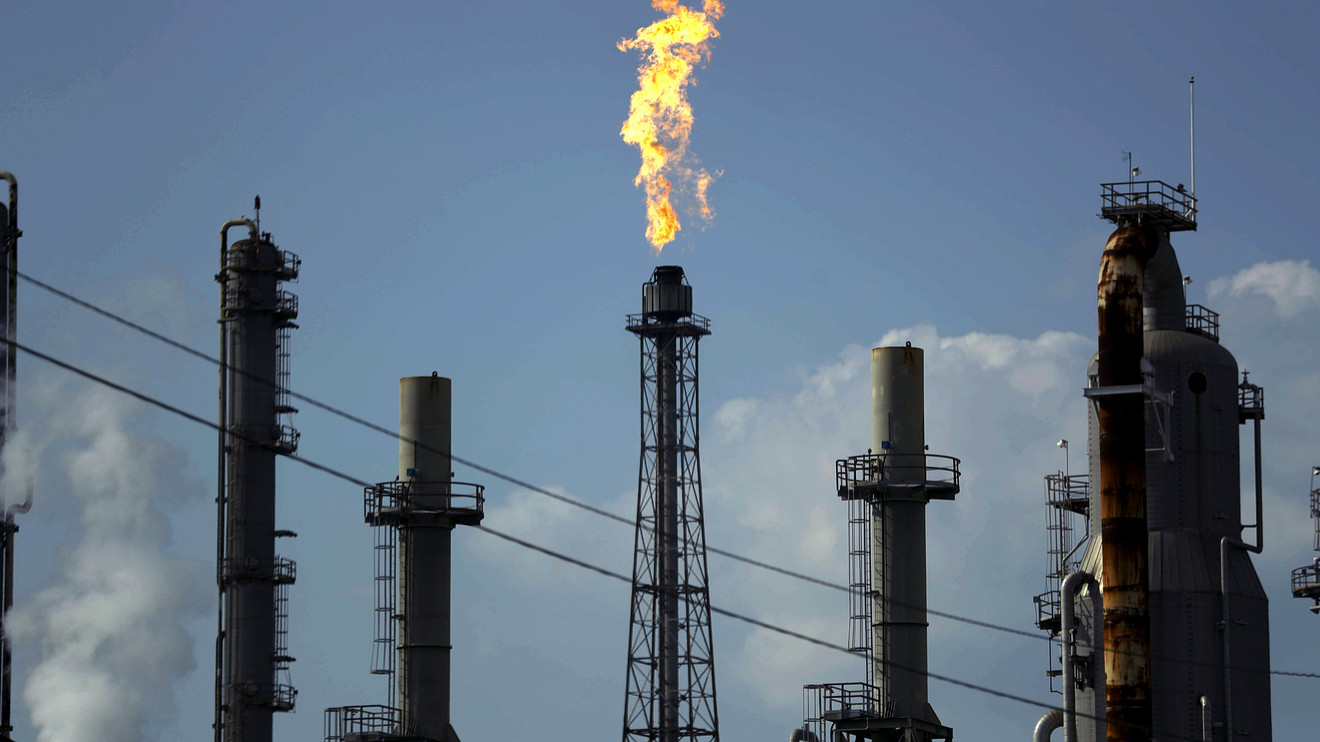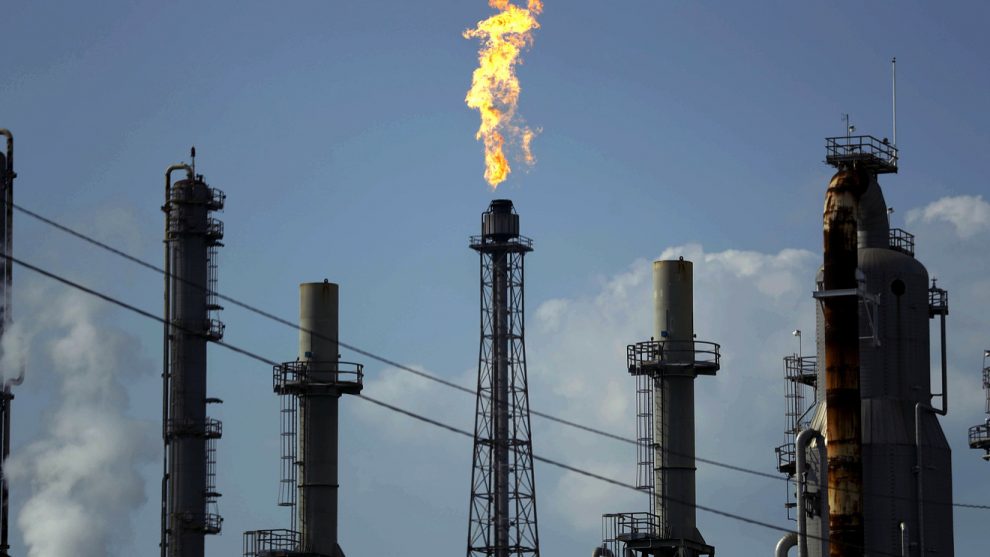
Oil futures split two ways on Monday, with U.S. prices ending higher but global benchmark Brent crude posting a loss as the U.S. announced new sanctions on Iran.
President Donald Trump on Monday signed an executive order imposing financial sanctions on Iranian leaders, according to pool reports from the White House.
Trump on Monday “took aim at the [Iran] Supreme Leader Ayatollah Khamenei and questioned the U.S. presence in defending the Straight of Hormuz,” said Edward Moya, senior market analyst in New York with Oanda. “We are not seeing a clear message from the White House, but Trump appears hesitant to engage in war.”
“Trump does not want a war before the [U.S. presidential] election and he could choose to make a deal with Iran and use that as another campaign point,” Moya told MarketWatch. Traders have been closely watching these developments, which have the potential to disrupt oil flow in the Middle East.
In Monday dealings, August West Texas Intermediate crude CLQ19, +0.71% climbed by 47 cents, or 0.8%, to settle at $57.90 a barrel on the New York Mercantile Exchange. That was the highest front-month contract finish since May 29, according to Dow Jones Market Data. Prices rose 8.8% for last week, the biggest weekly percentage climb since the week ended Dec. 2, 2016.
Read: Here’s what’s at stake for oil as the Iran-U.S. tensions escalate
The hefty climb for U.S. prices last week came on the heels of expectations that Middle East tensions may lead to a disruption in the oil markets. Oil bulls had also cheered signs that economy-boosting central bank policy would be delivered.
For the rest of the summer, “crude is likely to remain supported on the growing risks of military conflict in the Persian Gulf, disruptions with U.S. crude production as hurricane season picks up, an expected upgrade in demand forecasts as Fed rate cut expectations grow rapidly, and for the G-20 summit to deliver a temporary truce in the trade war and not a major breakthrough between China and the U.S.,” said Moya. “The risks remain tilted to the upside for oil prices.”
Meanwhile, international benchmark August Brent crude BRNQ19, +0.00% ended down 34 cents, or 0.5%, at $64.86 a barrel on ICE Futures Europe. The contract wrapped trading Friday at $65.20 — the highest since May 30. Front-month Brent saw a 5.1% gain last week.
The Trump administration has turned up the economic pressure on Tehran since Trump pulled the U.S. out of the 2015 nuclear deal in May 2018, hoping to drive Iran to accept a tougher agreement that would end uranium enrichment and curb its regional ambitions. The U.S. is seeking ultimately to drive the Islamic Republic’s oil exports to zero to prompt the nuclear concessions.
Washington has blamed Iran for attacks on tankers, which Tehran denied. Iran downed a U.S. drone and has threatened to violate some terms of the 2015 pact.
“New sanctions would likely have limited impact, particularly on the oil sector, as current U.S. sanctions have essentially eliminated Iranian crude from the global marketplace,” said Robbie Fraser, senior commodity analyst at Schneider Electric. “As the situation continues, the Hormuz Strait remains the key area to watch, with Iran capable of temporarily – though not permanently – disrupting oil shipments through the region.”
Meanwhile, the Organization of the Petroleum Exporting Countries and its allies will hold meetings on July 1-2. The session was originally scheduled for June 25-26.
The impetus behind delaying the meeting is a wait-and-see approach. OPEC officials want to see the outcome of the G-20 summit, and they hope Trump and China President Xi at least make some progress on a trade deal, analysts have said.
Read: OPEC braces for ‘critical’ meeting at a particularly volatile time for oil
“Consensus continues to lean heavily in favor of extending current production cuts with several non-OPEC participants publicly joining the call for continuation,” said Fraser, in a daily email.
“With meetings set for the start of next month, overall uncertainty appears low, which could mitigate some of the usual volatility that surrounds OPEC summits,” he said. “However, Russia has stopped short of fully endorsing a continuation, leaving some room for negotiations once formal meetings commence.”
Also on Nymex, July gasoline RBN19, -0.12% lost less than half a cent, or 0.06%, to $1.855 a gallon. Futures prices for the fuel marked their highest settlement Friday, at $1.8561, since late May and logged a weekly rise of 7.1%, boosted in large part by the Friday fire at a major refinery in Philadelphia.
July heating oil HON19, -0.45% fell nearly a penny, or 0.4%, at $1.909 a gallon, after ending 4.7% higher for last week.
Among the other energy contracts, July natural gas NGN19, +5.54% settled at $2.303 per million British thermal units, up 11.7 cents, or 5.4%. Prices recouped some of the 8.4% they lost last week, when the EIA reported a larger-than-expected weekly rise in domestic supplies.




